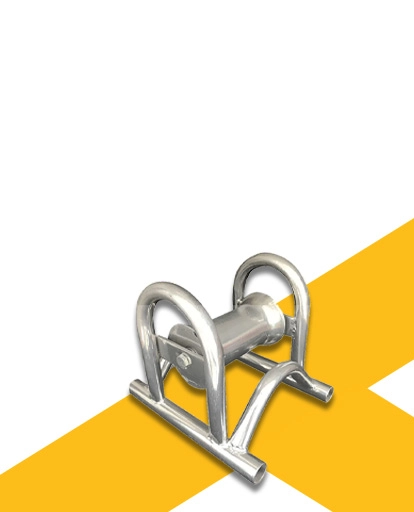
-
 Afrikaans
Afrikaans -
 Albanian
Albanian -
 Amharic
Amharic -
 Arabic
Arabic -
 Armenian
Armenian -
 Azerbaijani
Azerbaijani -
 Basque
Basque -
 Belarusian
Belarusian -
 Bengali
Bengali -
 Bosnian
Bosnian -
 Bulgarian
Bulgarian -
 Catalan
Catalan -
 Cebuano
Cebuano -
 Corsican
Corsican -
 Croatian
Croatian -
 Czech
Czech -
 Danish
Danish -
 Dutch
Dutch -
 English
English -
 Esperanto
Esperanto -
 Estonian
Estonian -
 Finnish
Finnish -
 French
French -
 Frisian
Frisian -
 Galician
Galician -
 Georgian
Georgian -
 German
German -
 Greek
Greek -
 Gujarati
Gujarati -
 Haitian Creole
Haitian Creole -
 hausa
hausa -
 hawaiian
hawaiian -
 Hebrew
Hebrew -
 Hindi
Hindi -
 Miao
Miao -
 Hungarian
Hungarian -
 Icelandic
Icelandic -
 igbo
igbo -
 Indonesian
Indonesian -
 irish
irish -
 Italian
Italian -
 Japanese
Japanese -
 Javanese
Javanese -
 Kannada
Kannada -
 kazakh
kazakh -
 Khmer
Khmer -
 Rwandese
Rwandese -
 Korean
Korean -
 Kurdish
Kurdish -
 Kyrgyz
Kyrgyz -
 Lao
Lao -
 Latin
Latin -
 Latvian
Latvian -
 Lithuanian
Lithuanian -
 Luxembourgish
Luxembourgish -
 Macedonian
Macedonian -
 Malgashi
Malgashi -
 Malay
Malay -
 Malayalam
Malayalam -
 Maltese
Maltese -
 Maori
Maori -
 Marathi
Marathi -
 Mongolian
Mongolian -
 Myanmar
Myanmar -
 Nepali
Nepali -
 Norwegian
Norwegian -
 Norwegian
Norwegian -
 Occitan
Occitan -
 Pashto
Pashto -
 Persian
Persian -
 Polish
Polish -
 Portuguese
Portuguese -
 Punjabi
Punjabi -
 Romanian
Romanian -
 Russian
Russian -
 Samoan
Samoan -
 Scottish Gaelic
Scottish Gaelic -
 Serbian
Serbian -
 Sesotho
Sesotho -
 Shona
Shona -
 Sindhi
Sindhi -
 Sinhala
Sinhala -
 Slovak
Slovak -
 Slovenian
Slovenian -
 Somali
Somali -
 Spanish
Spanish -
 Sundanese
Sundanese -
 Swahili
Swahili -
 Swedish
Swedish -
 Tagalog
Tagalog -
 Tajik
Tajik -
 Tamil
Tamil -
 Tatar
Tatar -
 Telugu
Telugu -
 Thai
Thai -
 Turkish
Turkish -
 Turkmen
Turkmen -
 Ukrainian
Ukrainian -
 Urdu
Urdu -
 Uighur
Uighur -
 Uzbek
Uzbek -
 Vietnamese
Vietnamese -
 Welsh
Welsh -
 Bantu
Bantu -
 Yiddish
Yiddish -
 Yoruba
Yoruba -
 Zulu
Zulu


Nov . 18, 2024 08:42 Back to list
Exploring the Mechanics of Push-Pull Rod Systems in Engineering Applications
Understanding the Push-Pull Rod Mechanism
The push-pull rod mechanism is a fundamental component in various mechanical systems, utilized for transmitting motion and force in a controlled manner. This ingenious design finds applications across multiple fields, such as automotive engineering, robotics, and aerospace. By understanding the dynamics of a push-pull rod, we can appreciate its significance and versatility in modern engineering.
Understanding the Push-Pull Rod Mechanism
In automotive engineering, push-pull rods are commonly employed in the linkage systems of various components. For instance, they are integral to the functioning of clutch and throttle controls. When the driver operates the clutch pedal or accelerator, the rod translates this motion into the required adjustments in the engine or transmission, thereby facilitating smoother vehicle operation.
push pull rod

Robotics is another field where the push-pull rod mechanism plays a crucial role. In robotic arms, push-pull rods can be used to manipulate the end effector’s position and orientation precisely. This is especially important for tasks requiring dexterity and accuracy, such as assembly operations in manufacturing or delicate procedures in surgical robots.
Moreover, in aerospace applications, maintaining control over movable surfaces such as flaps and rudders is critical. Push-pull rods provide a reliable means of control, ensuring that pilots can maneuver the aircraft effectively during flight. The ability to control these surfaces with precision contributes significantly to safety and performance in aviation.
Despite their straightforward design, the effectiveness of push-pull rods can be influenced by factors such as material choice, rod length, and the environment in which they operate. Engineers meticulously select materials to withstand various stresses and strains, ensuring longevity and reliability of the mechanism.
In conclusion, the push-pull rod mechanism is a simple yet highly effective method for translating forces and motions across different engineering domains. Its applications are vast and varied, underscoring its importance in facilitating motion control in numerous mechanical systems. As technology continues to advance, the role of push-pull rods will undoubtedly evolve, paving the way for even more innovative designs and applications.
Latest news
What Are Construction Tools and How Are They Used?
NewsJul.11,2025
Professional-Grade Duct Rodding Tools for Superior Cable Installation
NewsJul.11,2025
Enhancing Safety and Efficiency with Modern Hot Stick Solutions
NewsJul.11,2025
Empowering Cable Installation with Advanced Rodder Solutions
NewsJul.11,2025
Elevate Your Cable Installation Projects with Cable Pulling Tools
NewsJul.11,2025
Efficient Cable Handling Solutions: Cable Rollers for Sale
NewsJul.11,2025











